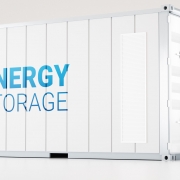Accounting for digital infrastructure GHG emissions
A host of regulations worldwide have introduced (or will introduce) legal mandates forcing data center operators to report specific operational data and metrics. Key examples include the European Union’s Corporate Sustainability Reporting Directive (CSRD); the European Commission’s proposed Energy Efficiency Directive (EED) recast; the draft US Securities and Exchange Commission’s (SEC) climate disclosure proposal and various national reporting requirements (including in Brazil, Hong Kong, Japan, New Zealand, Singapore, Switzerland, and the UK) under the Task Force on Climate-related Financial Disclosures (TCFD). The industry is not, currently, adequately prepared to address these requirements, however.
Current data-exchange practices lack consistency — and any recognized consensus — on reporting sustainability-related data, such as energy and water use, greenhouse gas (GHG) emissions and operational metrics. Many enterprises have, throughout discussions with Uptime Institute, indicated that it is difficult (and sometimes impossible) to obtain energy and emissions data from colocation and cloud operators.
The Uptime Institute Global Data Center Survey 2022 made clear that data center operators’ readiness to report GHG emissions has seen incremental improvement over previous surveys, with only 37% of respondents indicating that they are prepared to publicly report their GHG emission inventories (up by just 4 percentage points on the previous year). Of these, less than one-third of respondents are currently including their Scope 3 emissions inventories.
Fortunately, most of the reporting regimes will become effective for the 2024 reporting year, giving data center managers time to work with their colocation and cloud providers on obtaining the necessary data, and to put their carbon accounting processes in order. While the finer details will vary according to each enterprise’s digital infrastructure footprint, there are certain common steps that data center managers can implement to facilitate the collection of quality data to fulfill these new reporting mandates.
Colocation operations
The GHG Protocol classifies emissions as Scope 1 and Scope 2, where an entity has operational control or financial control. Having analyzed these definitions Uptime’s position is that IT operators exercise both operational and financial control over their IT operations in colocation data centers.
From an operational control standpoint, IT operators specify and purchase the IT equipment installed in the colocation space, set the operating parameters for that equipment (power management settings, virtual machine creation and assignment, hardware utilization levels, etc.) and maintain and monitor operations. Similarly, IT operators have financial control: they purchase, install, operate and maintain the IT equipment. On which basis, GHG emissions from IT operations in a colocation facility should be classified as Scope 2 for the IT operator and Scope 3 for the colocation operator. Emissions (and energy use) from facility functions, such as power distribution losses from the grid connection to the IT hardware, and cooling energy, should fall into Scope 3 for the IT operator tenant.
Table 1 outlines Scope 2 and Scope 3 emissions reporting responsibilities for IT operations in enterprise (owned), colocation and public cloud data centers under GHG Protocol Corporate Accounting and Reporting Standards.

In collaboration with colocation and IT operators, Business for Social Responsibility (a sustainable business network and consultancy) published some initial guidance on emissions accounting in 2017: GHG Emissions Accounting, Renewable Energy Purchases, and Zero-Carbon Accounting: Issues and Considerations for the Colocation Data Center Industry.
This guidance did not take a position on the assignment of Scope 2 and 3 emissions in colocation operations, however, leaving this decision to individual colocation operators.
In practice, different operators use two different accounting criteria. Equinix, for example, accounts for all energy use and emissions as Scope 2, with emissions effectively passed to tenants as Scope 3. NTT follows the approach (also recommended by Uptime) that GHG emissions from the energy use of IT operations in a colocation facility should be classified as Scope 2 for the IT operator and Scope 3 for the colocation operator.
The use of two different accounting criteria creates confusion and makes the comparison and understanding of emissions reports across the data center industry difficult. The industry needs to settle on a single accounting methodology for emissions reporting.
The GHG Protocol Corporate Accounting and Reporting Standards are likely to be cited as governing the classification of Scope 1, 2 and 3 emissions under legal mandates such as the CSRD and the proposed SEC climate disclosure requirements. Uptime recommends that colocation operators and their tenants conform to the GHG Protocol to meet these legal requirements.
Public cloud operations
Emissions accounting for IT operations in a public-cloud facility is straightforward: all emissions are Scope 2 for the cloud operator (since they own and operate the IT and facilities infrastructure) and Scope 3 for the IT operator (customer).
A cloud operation in a colocation facility adds another layer of allocation. Public-cloud IT energy use should be accounted for as Scope 3 by the colocation operator and Scope 2 by the cloud operator, with facility infrastructure-related emissions accounted for as Scope 2 and Scope 3 by each entity respectively. This represents no change for the IT operator: all emissions associated with its cloud-based applications and data — regardless where that cloud footprint exists — will be accounted for as Scope 3.
IT operators report that they have difficulty obtaining energy-use and emissions information from their cloud providers. The larger cloud operators, and several of the large colocation providers, typically claim that there are zero emissions associated with operations at their facilities because they are carbon-neutral on account of buying renewable energy and carbon offsets. The same providers are typically unable or unwilling to provide more detailed information — making compliance with legally mandated reporting requirements difficult for IT operators.
If IT operators are to comply with forthcoming disclosure obligations they will, in accordance with the GHG Protocol, need data on their energy use and their location-based (grid power mix) and market-based (contractual mix) emissions. They will also need more granular information on renewable energy consumption and the application of renewable energy certificates (RECs) in offsetting grid power use and the associated emissions if they are to fully understand the underlying details.
Required cloud and colocation provider sustainability data
With new sustainability reporting regulations due to take effect in the medium term, IT operators will clearly need more detailed data on energy and emissions from their infrastructure providers in meeting their compliance responsibilities, as well as in assessing the total environmental impact of their operations. Colocation and cloud services providers (and others providing hosting and various IT infrastructure services) will be expected to provide the data listed below — ideally as a condition of any service contract. This data will provide the information necessary to complete TCFD climate disclosures, as well as the IT operator’s sustainability report. Additional data may need to be added to this list to address specific local reporting or operating-efficiency mandates.
Data-transfer requirements for colocation and cloud services contracts should facilitate the annual reporting of operational data including:
- IT power consumption as reported through the operator-specific meter.
- 12-month average PUE for the space supporting the racks.
- Quantity of waste heat recovered and reused.
- Total-facility electricity consumption (over the year).
- The percentage of each type of generation supplying electricity to the facility (i.e., coal, natural gas, wind, solar, biomass etc.).
- Quantity of renewable energy consumed by the facility (megawatt hours, MWh).
- MWh of RECs / grid offsets (guarantees of origin, GOs) matched to grid purchases to claim renewable energy “use” and / or to offset grid emissions (to include generation type(s) and the avoided emissions value for each group of RECs or GOs used to match grid electricity consumption).
- Percentage of renewable energy “used” (consumed and matched) at the facility as declared by the supplier.
- Reported location-based emissions for the facility (MT CO2).
- Reported market-based emissions for the facility (MT CO2).
- Average annual emissions factor of electricity supplied (by utility, energy retailer or country or grid region) (MT CO2/MWh).
- Total-facility water consumption (over the year).
Note: GHG emissions values should be reported for the facility’s total fuel and electricity consumption. Scope 1 emissions should include any refrigerant emissions (fugitive or failure).
Energy-use data should be requested monthly or quarterly (recognizing that data reports from service providers will typically lag by one to three months) to allow tracking of power consumption, emissions metrics and objectives throughout the year. Current-year emissions can be estimated using the previous year’s emissions factor for electrical consumption at a facility.
Mandated reporting requirements will typically require data to be submitted in March following the end of the reporting year. Therefore, service agreements should allow for this to be delivered to clients by February.
Colocation and cloud-service providers need to develop methodologies to provide energy-use and location- and market-based-emissions estimates to their clients. Colocation providers should install metering to measure tenants’ IT power consumption, simplifying allocated energy use and emissions reporting. Cloud providers have several different approaches available for measuring or estimating energy use. Algorithms can be created that use IT-system and equipment power and utilization data (with tracking capabilities and / or knowledge of the power-use characteristics of the deployed IT equipment configurations) to estimate a customer’s energy use and associated location-based emissions.
Any calculation methodology should be transparent for customers. Cloud providers will need to choose a methodology that fits with their data collection capabilities and start providing data to their customers as soon as possible.
IT operators need to obtain information on the RECs, GOs and carbon offsets applied to the overall energy use at each facility at which they operate. This data will allow IT operators to validate the actual emissions associated with the energy consumed by the data center, as well as claims regarding renewable energy use and GHG emissions reductions. IT operators will need to exercise due diligence to ensure that data is accurately reported, and will need to match the service provider’s data to the operator’s chosen sustainability metrics.
Data required from IT tenants at colocation facilities
Colocation operators may require operational information from their tenants. The proposed EED recast is likely to require colocation operators to report specific IT operational data — which will have to be supplied by their tenants. At a minimum, colocation operators need to incorporate a clause into their standard contracts requiring tenants to provide legally mandated operational data. Contract language can be made more specific to the facilities covered by the forthcoming mandates as new regulations are promulgated.
Conclusion
The reporting of data center energy use and GHG emissions is undergoing a major transition — from a voluntary effort subject to limited scrutiny to legally mandated reporting requiring third-party assurance. These legal requirements can extend to smaller enterprise and colocation operators: the EED recast, for example, will apply to operations with just 100 kW of installed IT equipment power. These forthcoming requirements will require IT operators to take responsibility for their operations across all data-center categories — owned, colocation and cloud.
This new regulatory environment will mean digital infrastructure managers will now have to facilitate collaboration between their facilities teams, IT teams and data center service providers to create a coherent sustainability strategy across their operations. Processes will need to be created to generate, collect and report the data and metrics needed to comply with these requirements. At the industry level, standards need to be developed to create a consistent framework for data and metrics reporting.
These efforts need to be undertaken with some urgency since many of these new reporting obligations will take effect from the 2023 or 2024 operating year.



 2019
2019






